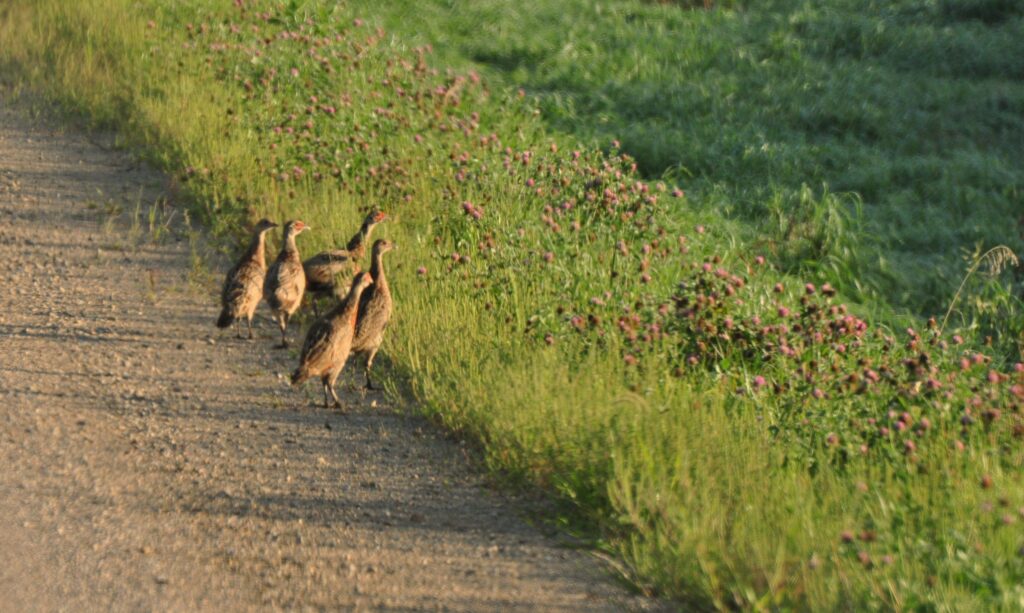Photography courtesy of Lowell Washburn, all rights reserved.
The results of this year’s recently completed August roadside game surveys have been analyzed and released. According to DNR Wildlife Research Biologist, Todd Bogenschutz, Iowa hunters can expect to see a 14 percent decrease in statewide pheasant numbers during the upcoming 2024 hunting seasons.
The annual cycle began on a high note with statewide winter snowfall measuring below normal during 2023-2024, resulting in average to above average [winter] survival for pheasants and other species of upland wildlife. But gains in winter survival were quickly offset by heavy spring rainfall and historic flooding that occurred during peak nesting. Iowa’s four-year string of dry nesting seasons ended on a sour note with every region of the state reporting up to 7-inches of above normal precipitation during 2024.
“Considering the adverse weather conditions that occurred during this year’s spring nesting season, the decrease in summer pheasant counts comes as no surprise” said Bogenschutz.

The greatest decrease in summer survey numbers occurred in the state’s southwest region where pheasant counts dropped by 72 percent from 2023. In southcentral Iowa, numbers fell by 37 percent over last year. Pheasants were down by a more moderate 16 percent in northcentral and declined by 18 percent in the northwest corner of the state. By contrast, pheasant numbers showed a substantial 17 percent gain in the east central region – the greatest increase tallied anywhere in the state during this year’s August survey period. Moderate [insignificant] gains or losses were recorded for the remainder of the state.
Although no one ever wants to see pheasant numbers decline, bird populations are highly dynamic exhibiting highs, lows, and everything in between. Bogenschutz noted that last year’s harvest of 590,000 roosters was the highest seen in Iowa since 2007. Only South Dakota harvested more pheasants. This year, hunters will still encounter good to excellent pheasant numbers similar to those seen during 2021 and 2022, which were considered to be excellent hunting seasons. Despite this year’s dip in numbers, Iowa continues to harbor one of the nation’s largest populations of ring-necked pheasants. If the harvest matches [survey] expectations, Iowa hunters will bag anywhere from 350,000 to 400,000 roosters during this year’s season, says Bogenschutz.

Iowa’s statewide small game surveys are conducted each August through the joint efforts of Department of Natural Resources Conservation Officers and DNR Wildlife Biologists. Beginning in 1962, the August game counts collect data from 215 standardized, 30-mile survey routes designed to monitor long-term statewide population trends for ring-necked pheasants, gray [Hungarian] partridge, bobwhite quail, and rabbits.

This year’s weather-related decline was not limited to pheasants. The number of bobwhite quail dropped by 32 percent during this summer’s survey. Gray partridge decreased by 37 percent. The count for cottontail rabbits showed a statewide increase of eleven percent.

 Tom Cope
Tom Cope Sue Wilkinson
Sue Wilkinson Susan Judkins Josten
Susan Judkins Josten Rudi Roeslein
Rudi Roeslein Elyssa McFarland
Elyssa McFarland Mark Langgin
Mark Langgin Adam Janke
Adam Janke Joe Henry
Joe Henry Kristin Ashenbrenner
Kristin Ashenbrenner Joe Wilkinson
Joe Wilkinson Dr. Tammy Mildenstein
Dr. Tammy Mildenstein Sean McMahon
Sean McMahon